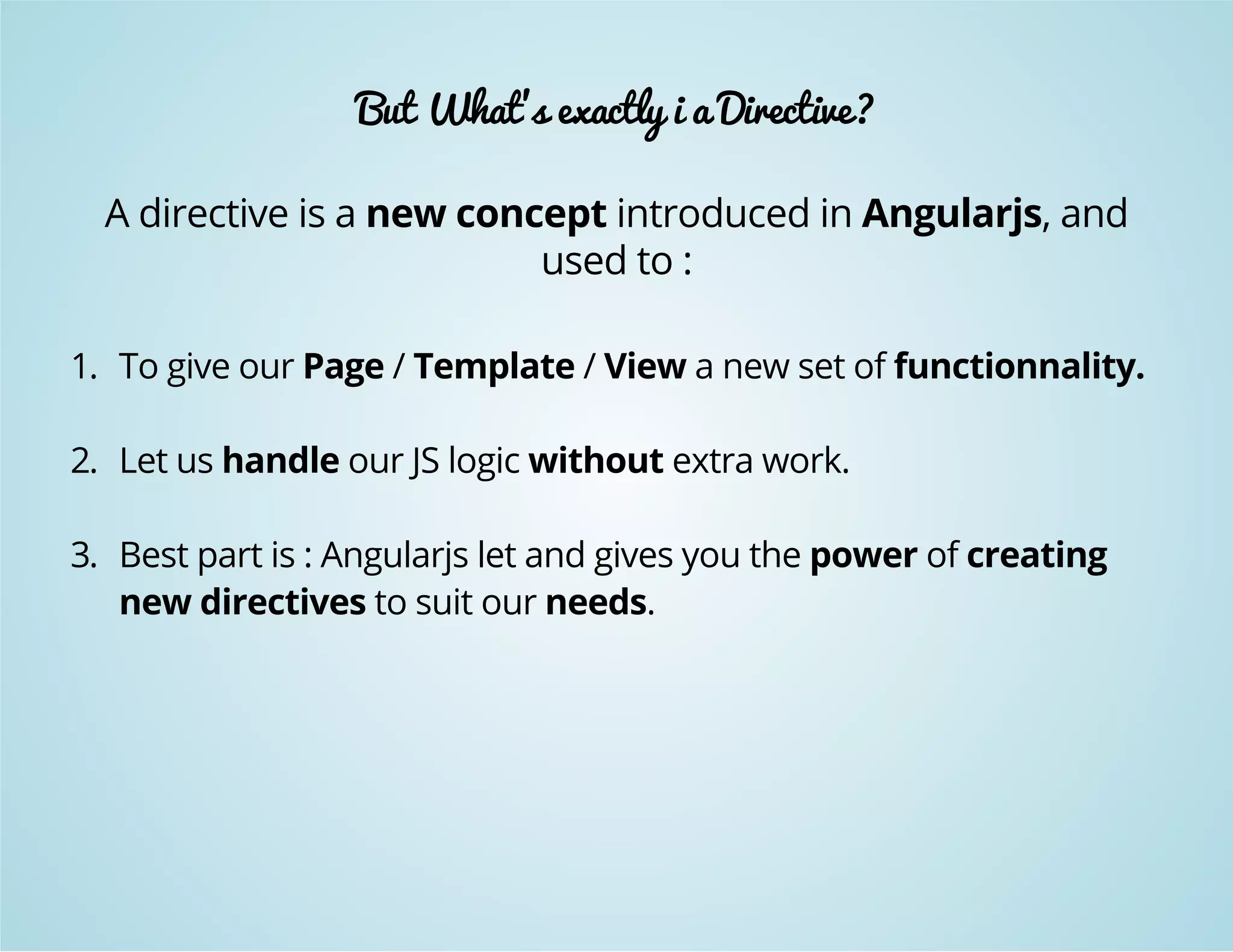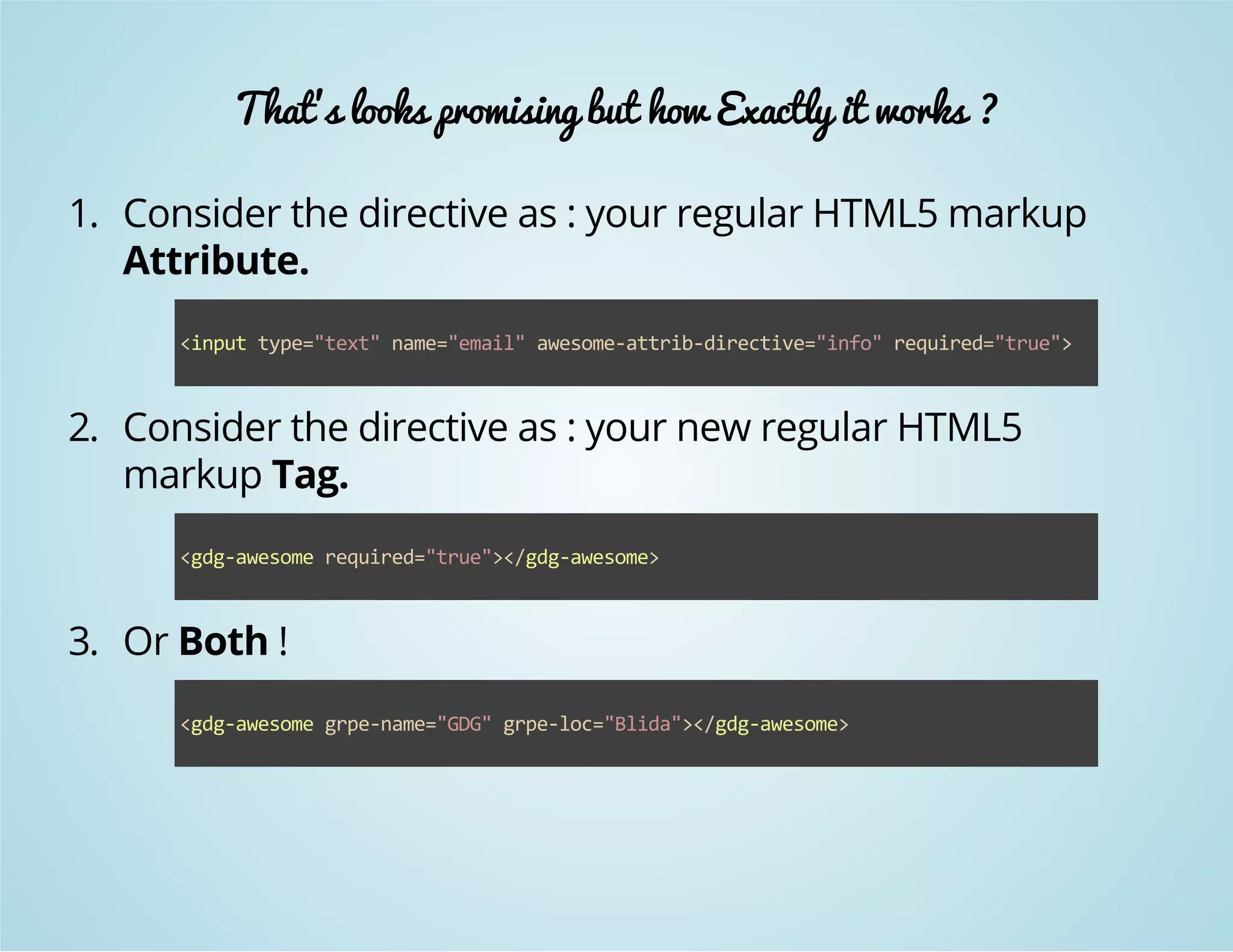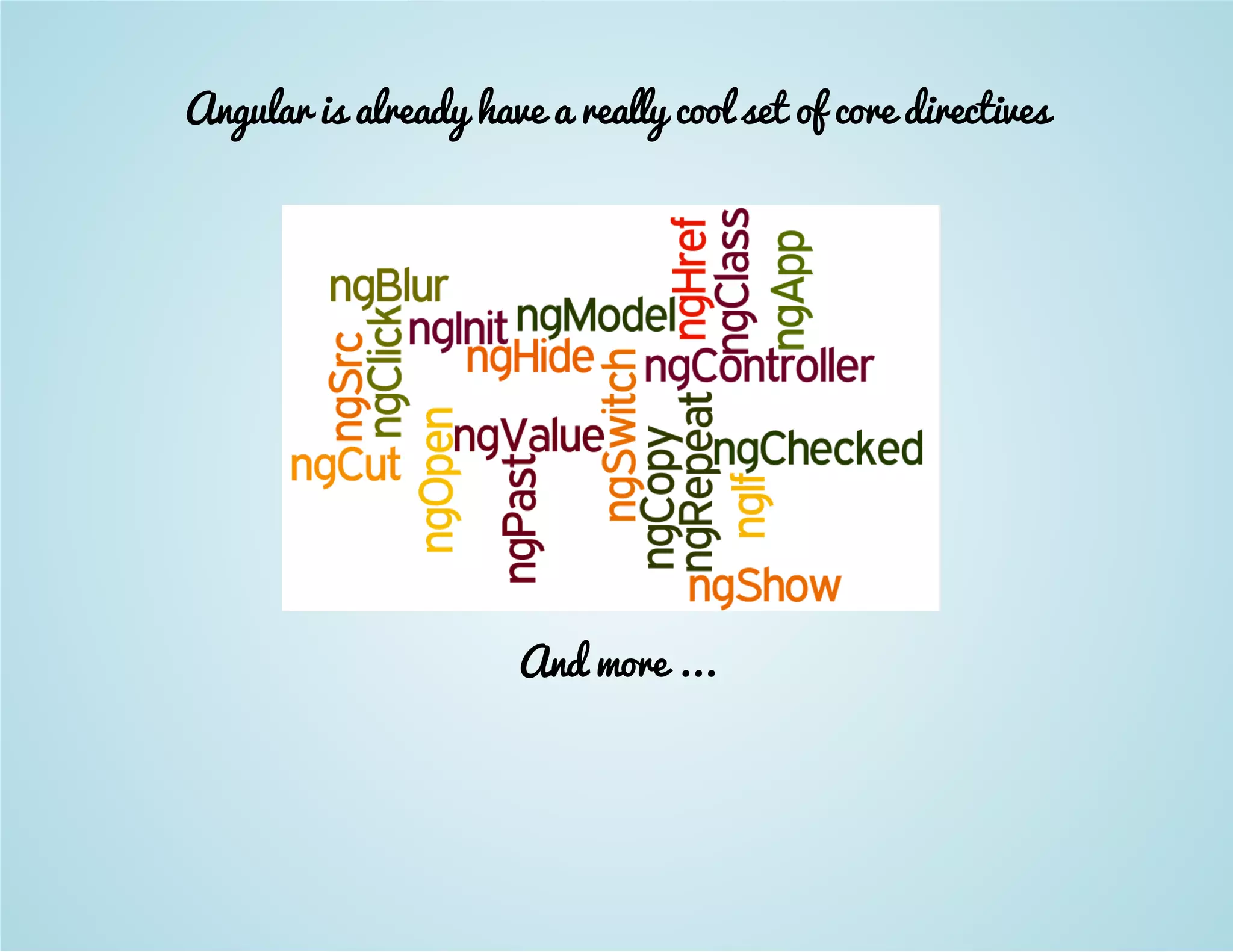1. AngularJS is a framework for building single-page applications using HTML and JavaScript. It was developed in 2009 and released in 2010.
2. Single-page applications load a single HTML page that is dynamically updated based on user interaction without reloading the page.
3. AngularJS provides services, controllers, factories and directives to help organize code and add functionality to web applications. Services provide reusable functions, controllers tie models to views, factories retrieve data, and directives create new HTML elements and attributes.
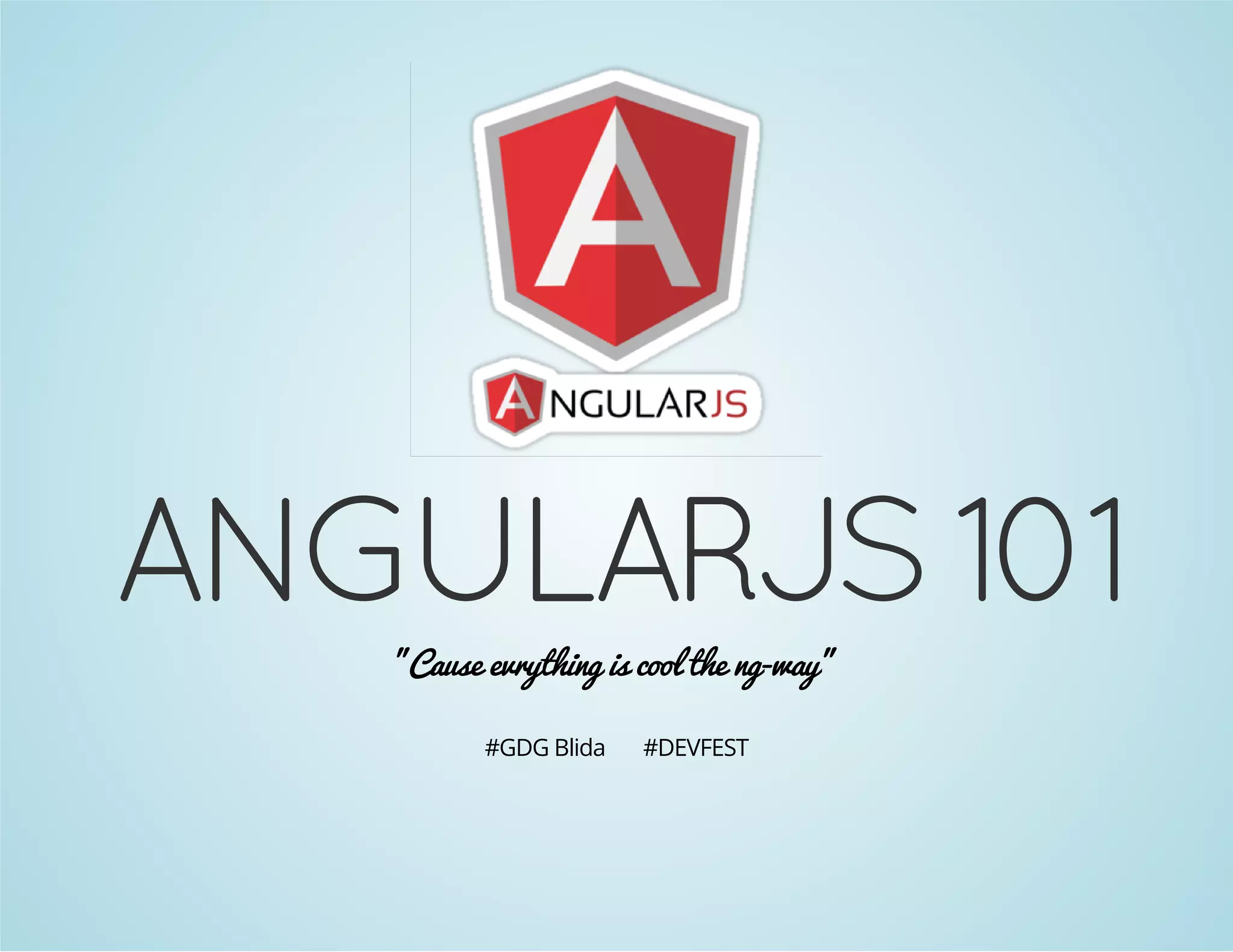

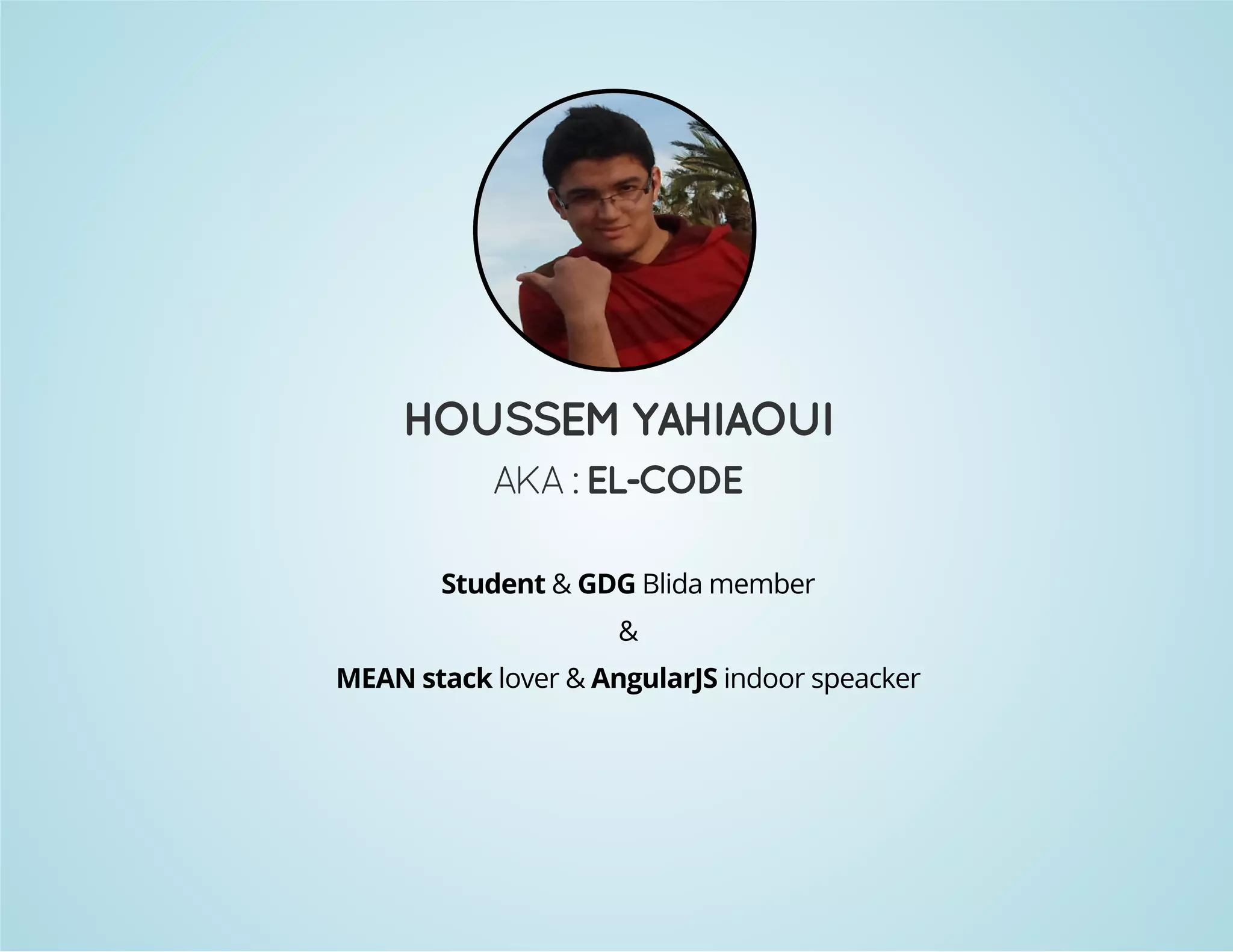



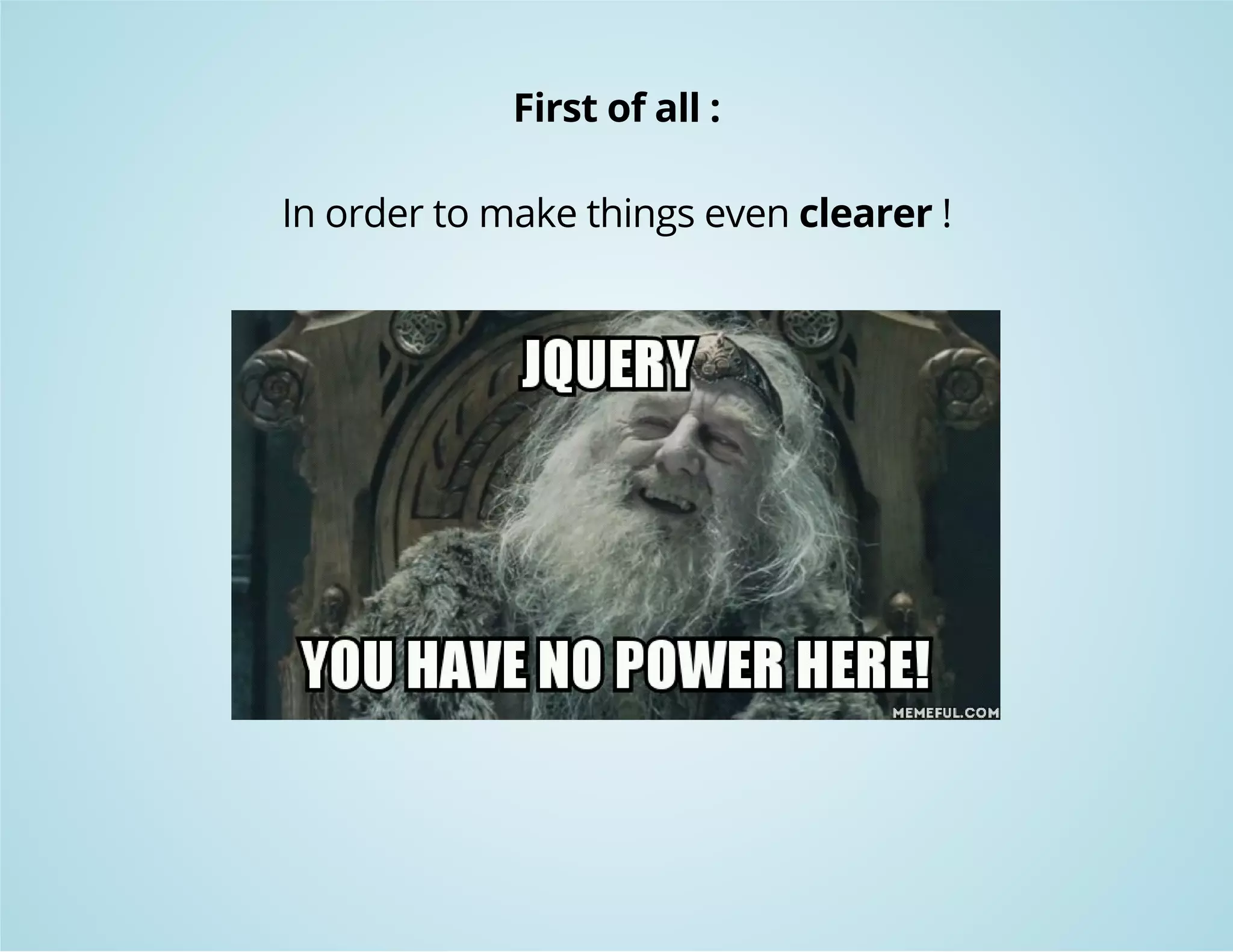
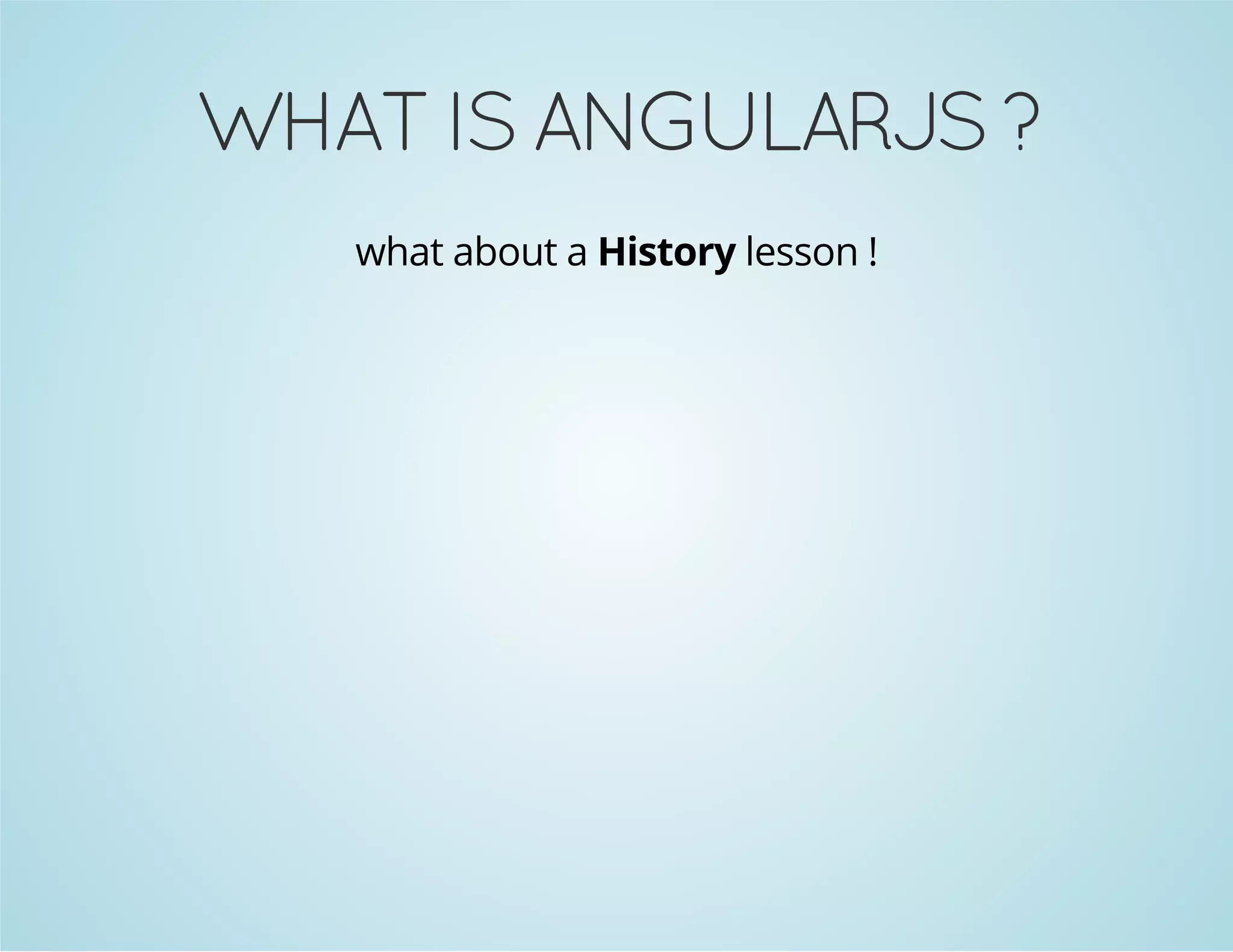
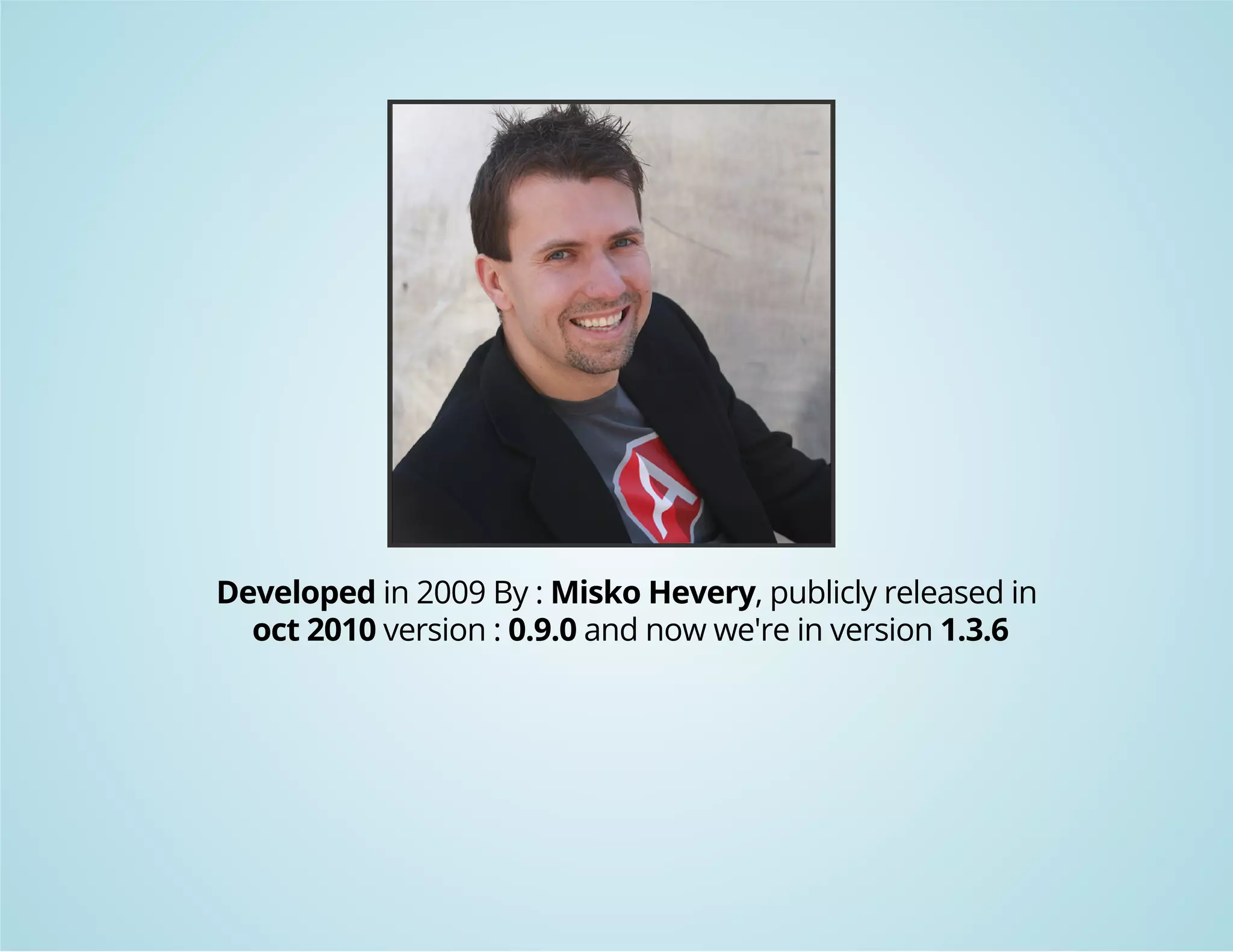

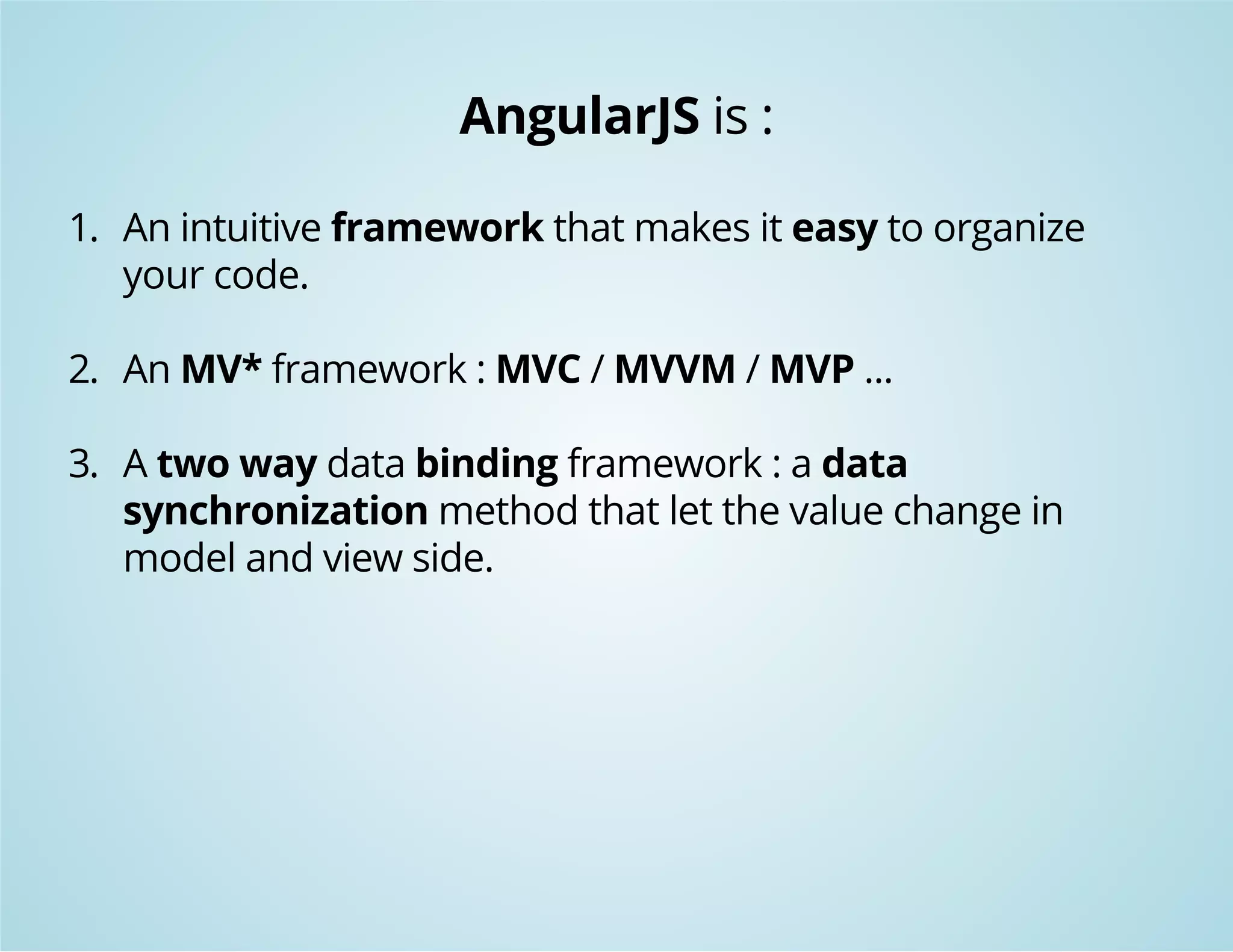
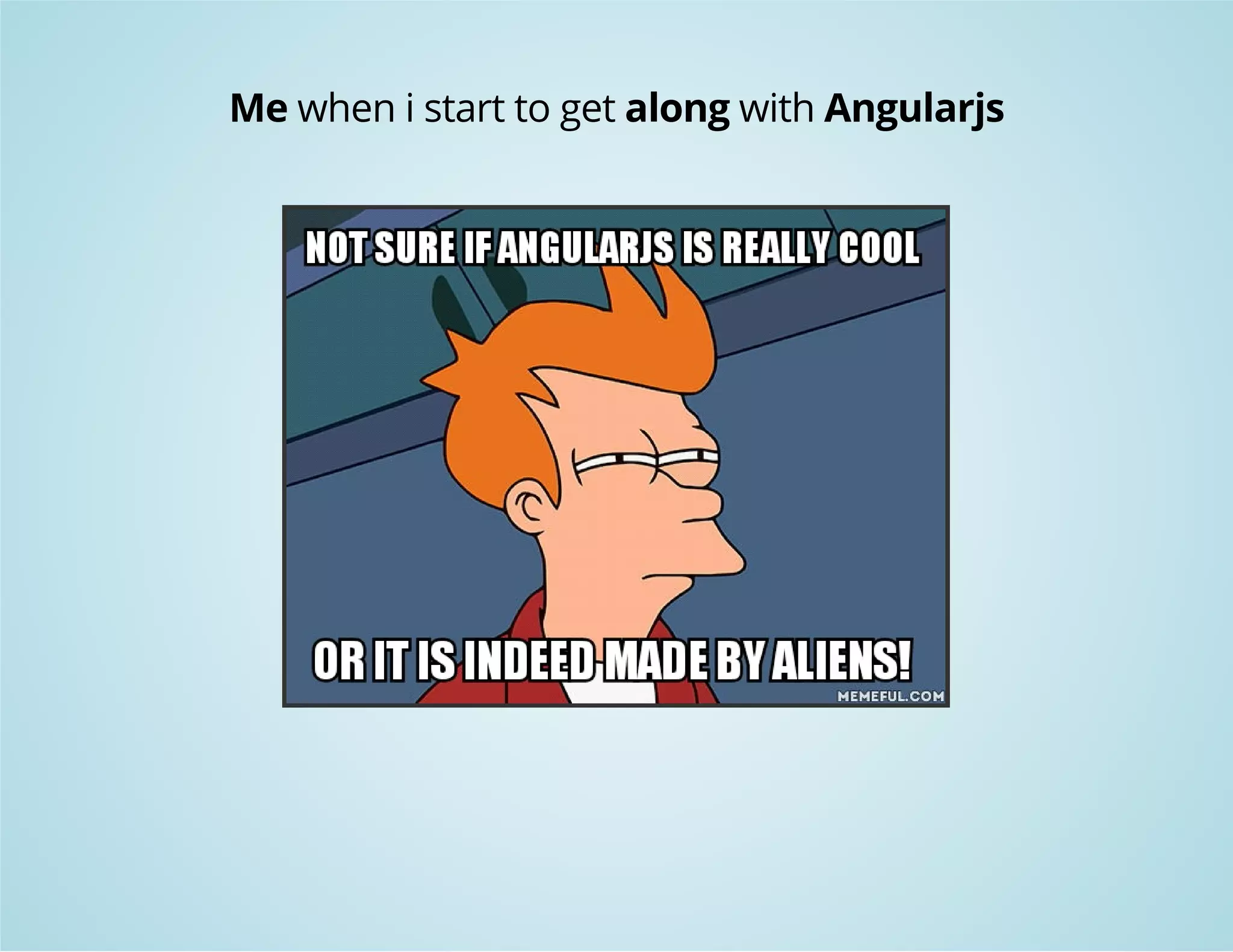


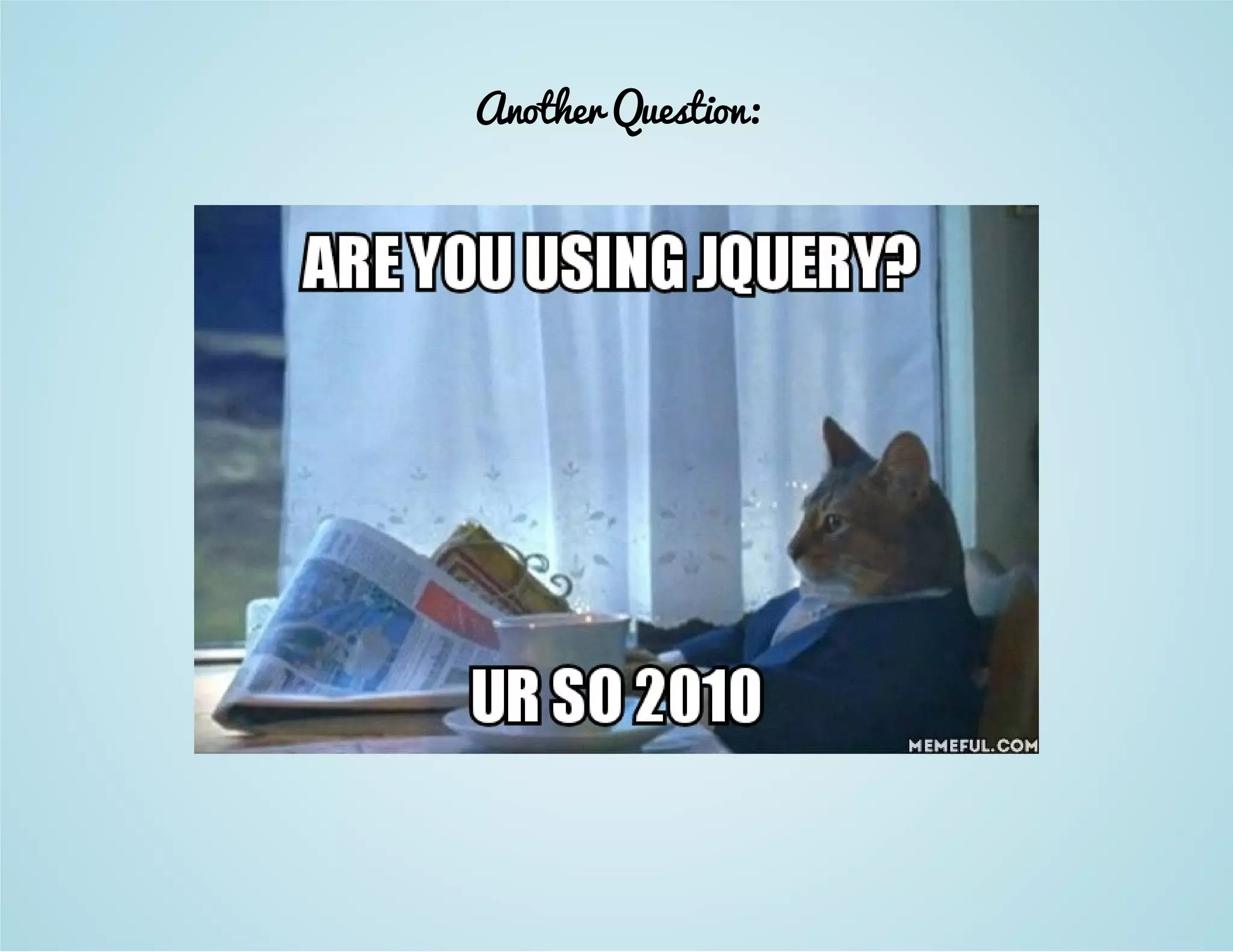


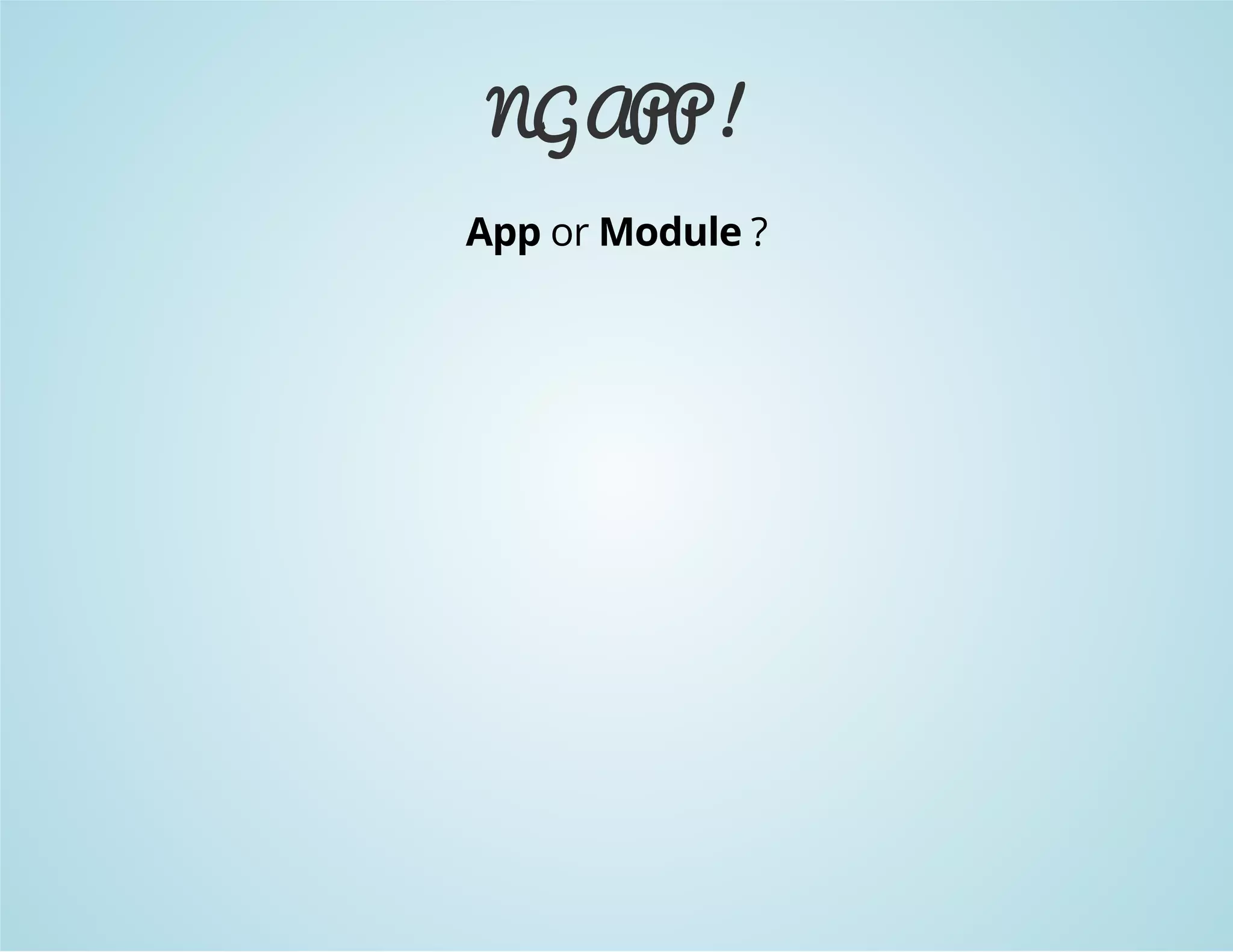

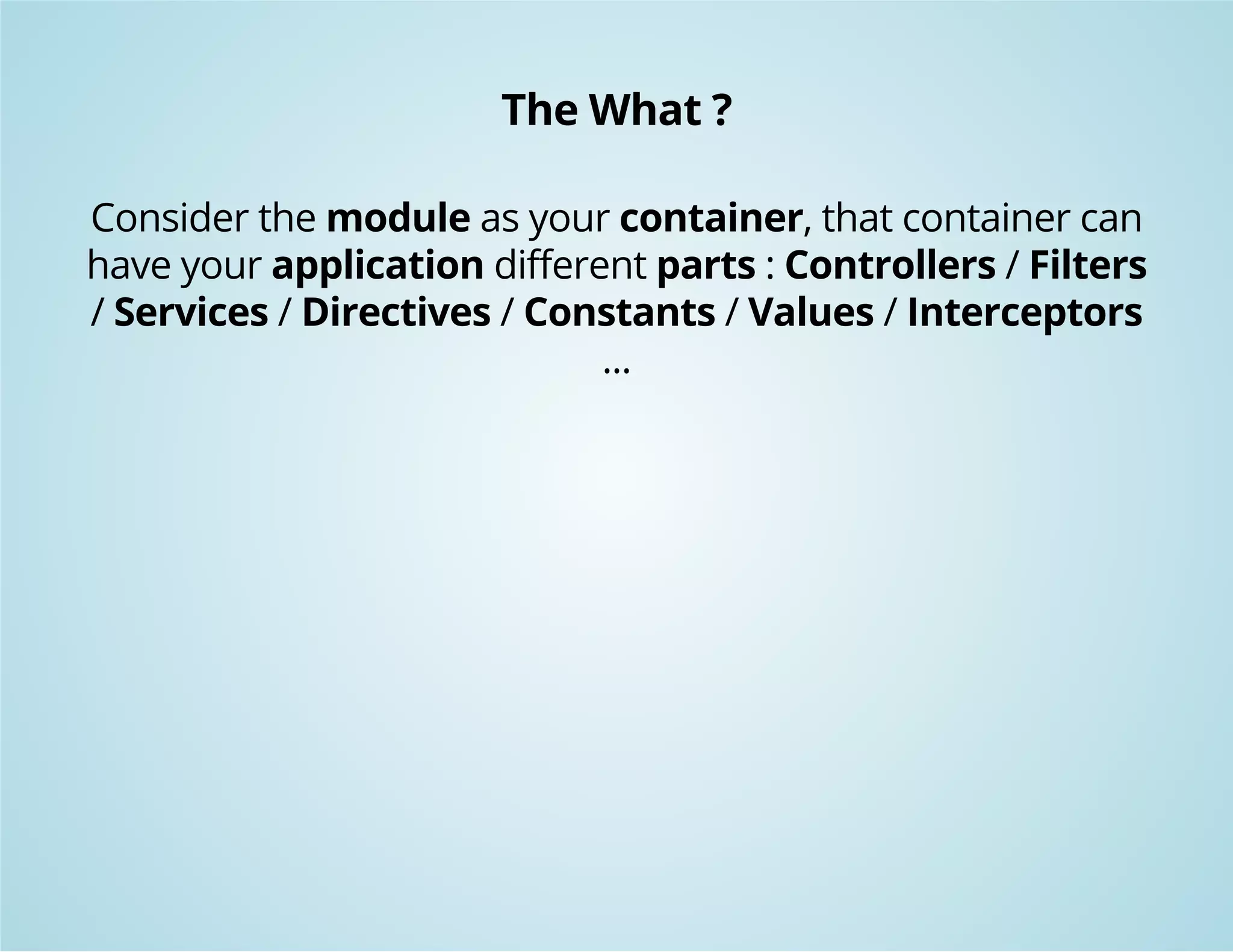
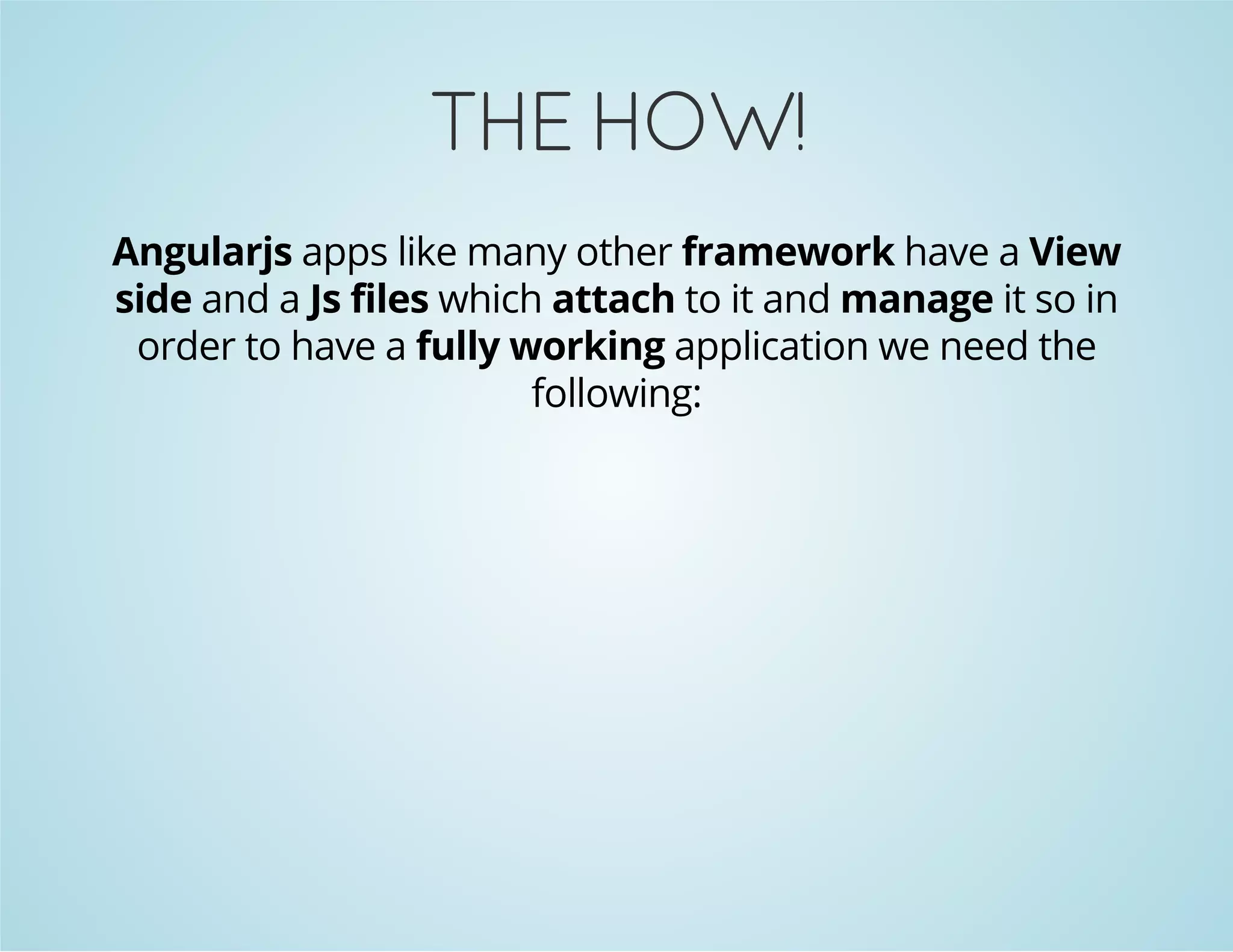
![In JS Side !
// in the app.js file or what ever you want to name it
angular.module('application name', ['External modules / it's blank by default]);
//or
var app = angular.module('application name', []);
// now we use the handled variable instead
app.
*
*
*
*](https://image.slidesharecdn.com/4rto0o2sugxta8kyqzma-signature-f4fc4a523b903b480c801e3364849de7956f8dc2b89352c95f2baeefdc02bf94-poli-141214132939-conversion-gate01/75/AngularJS-101-22-2048.jpg)
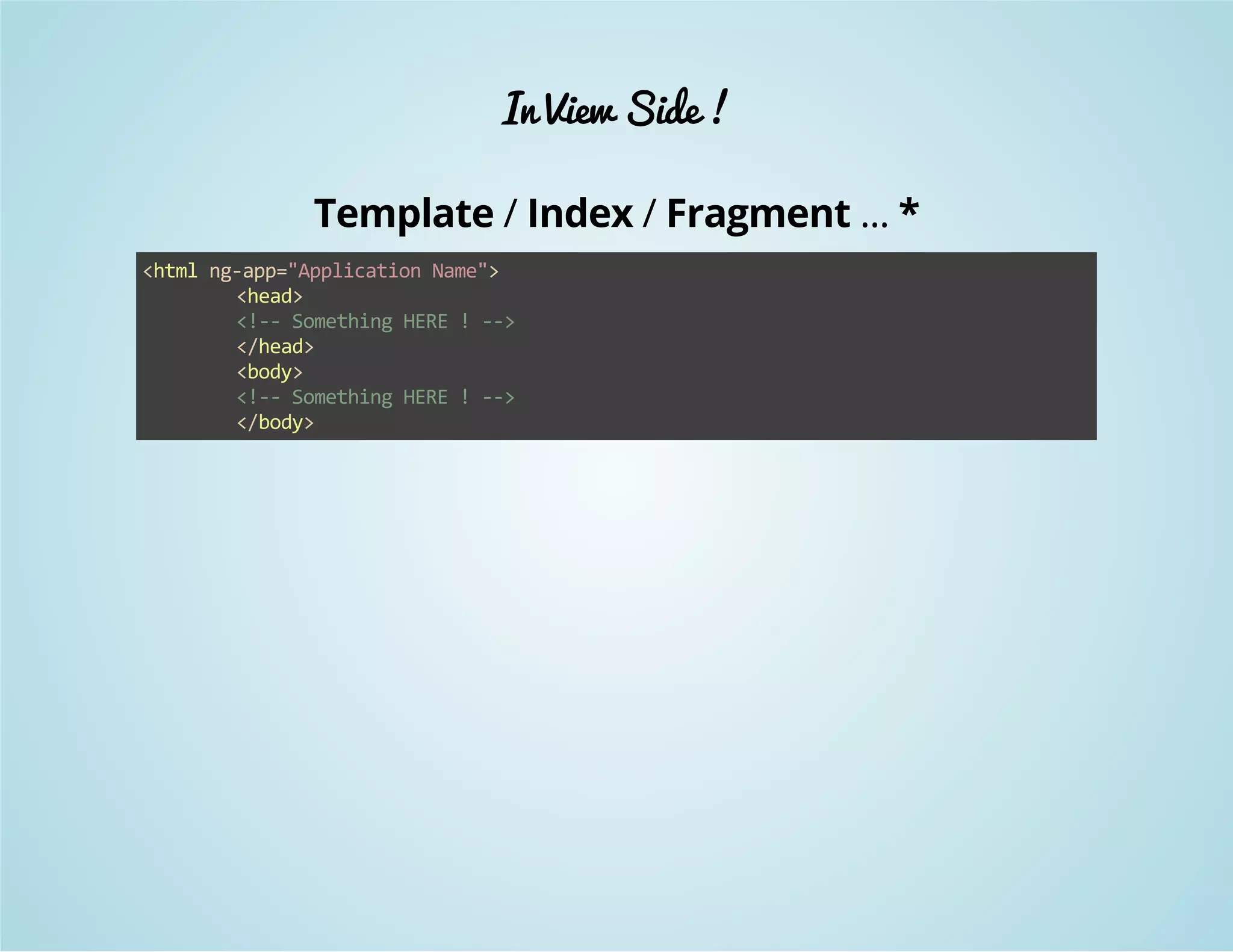

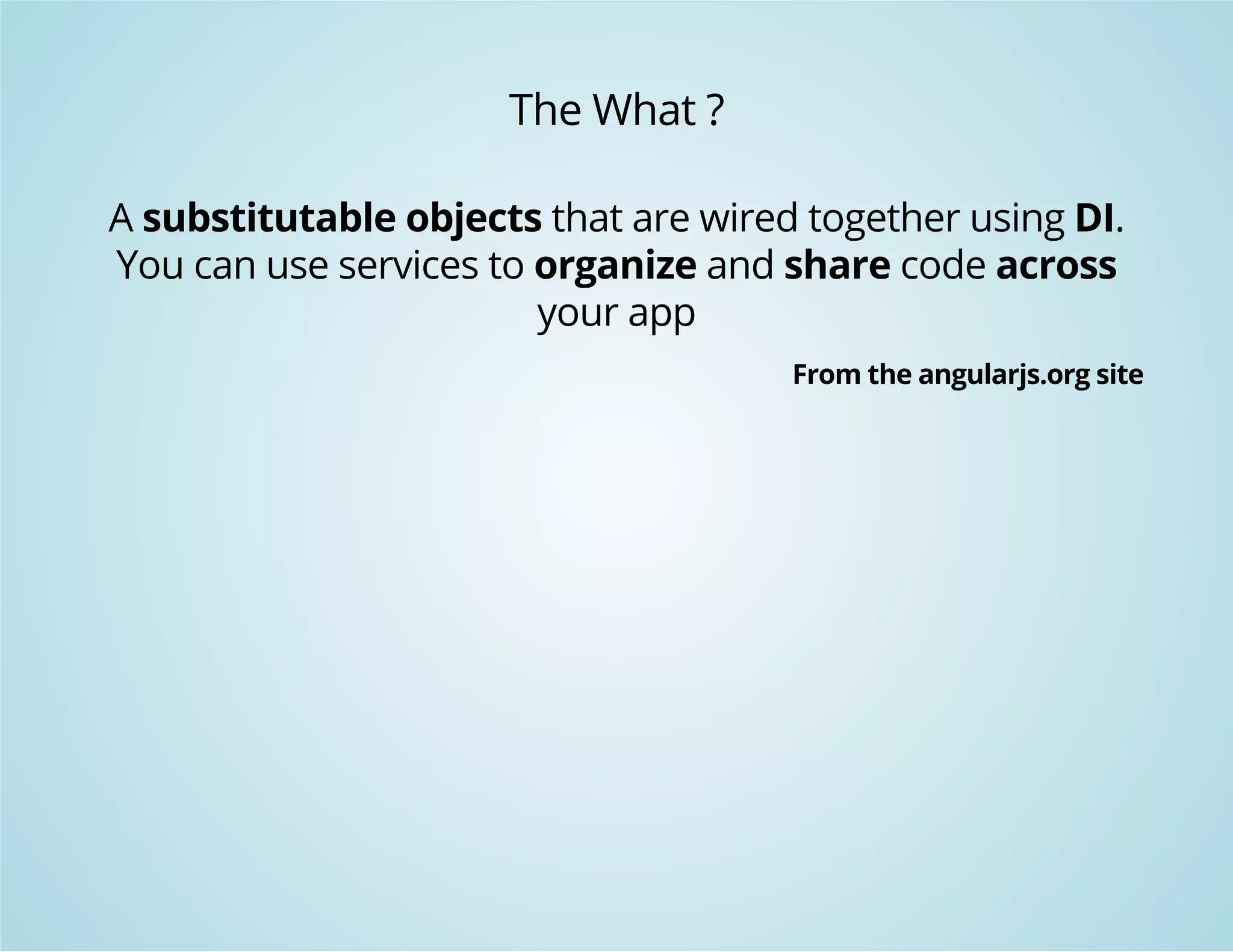
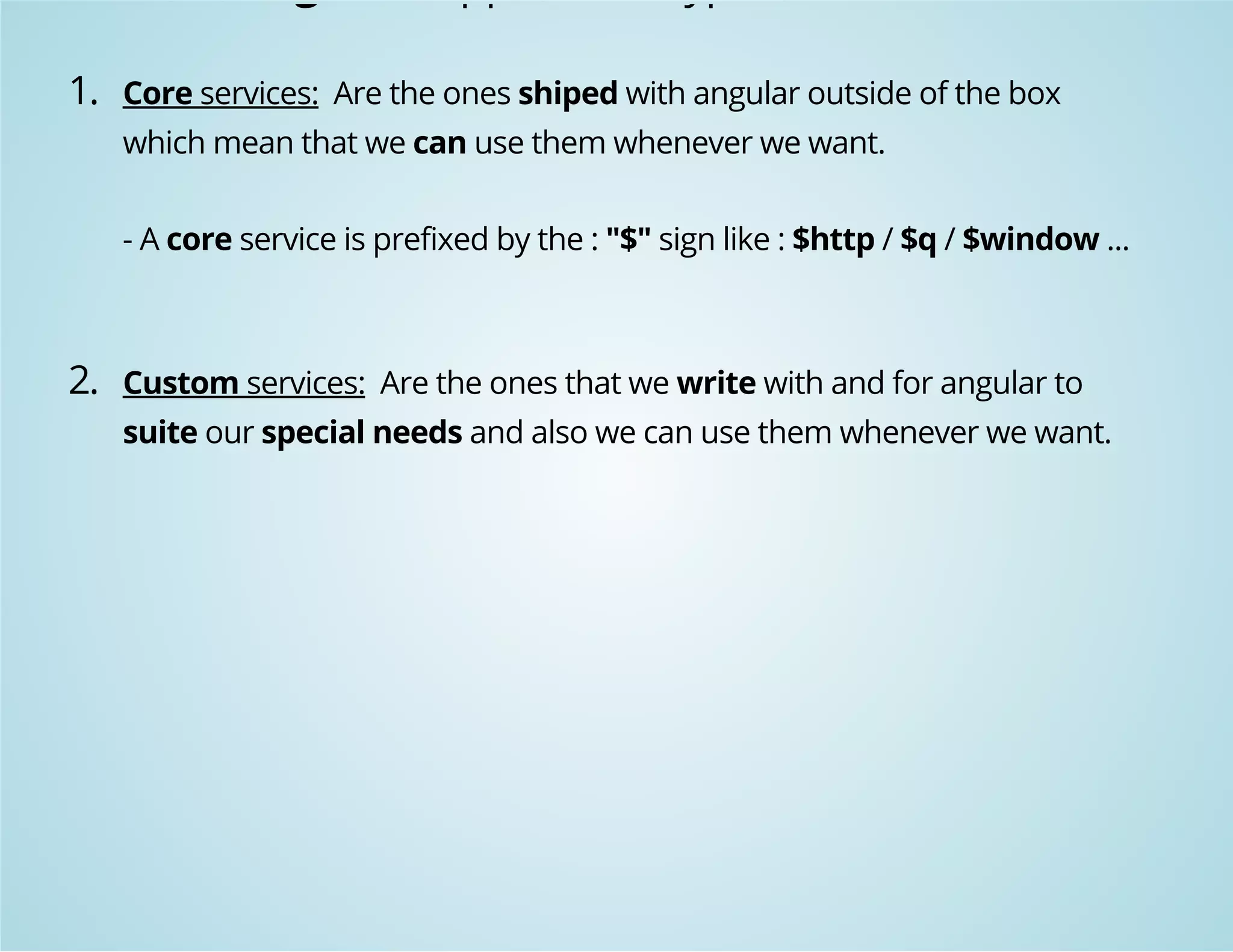

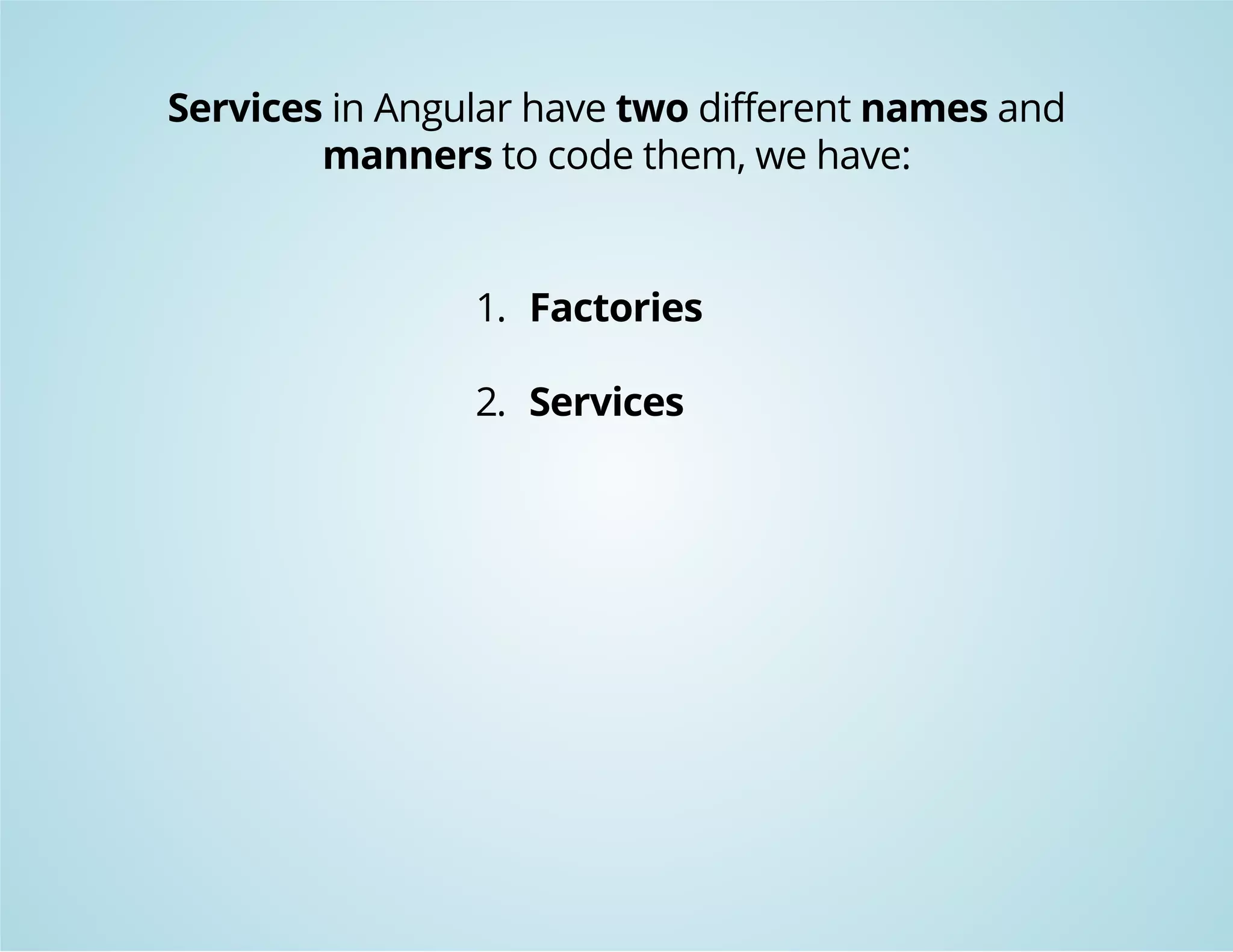


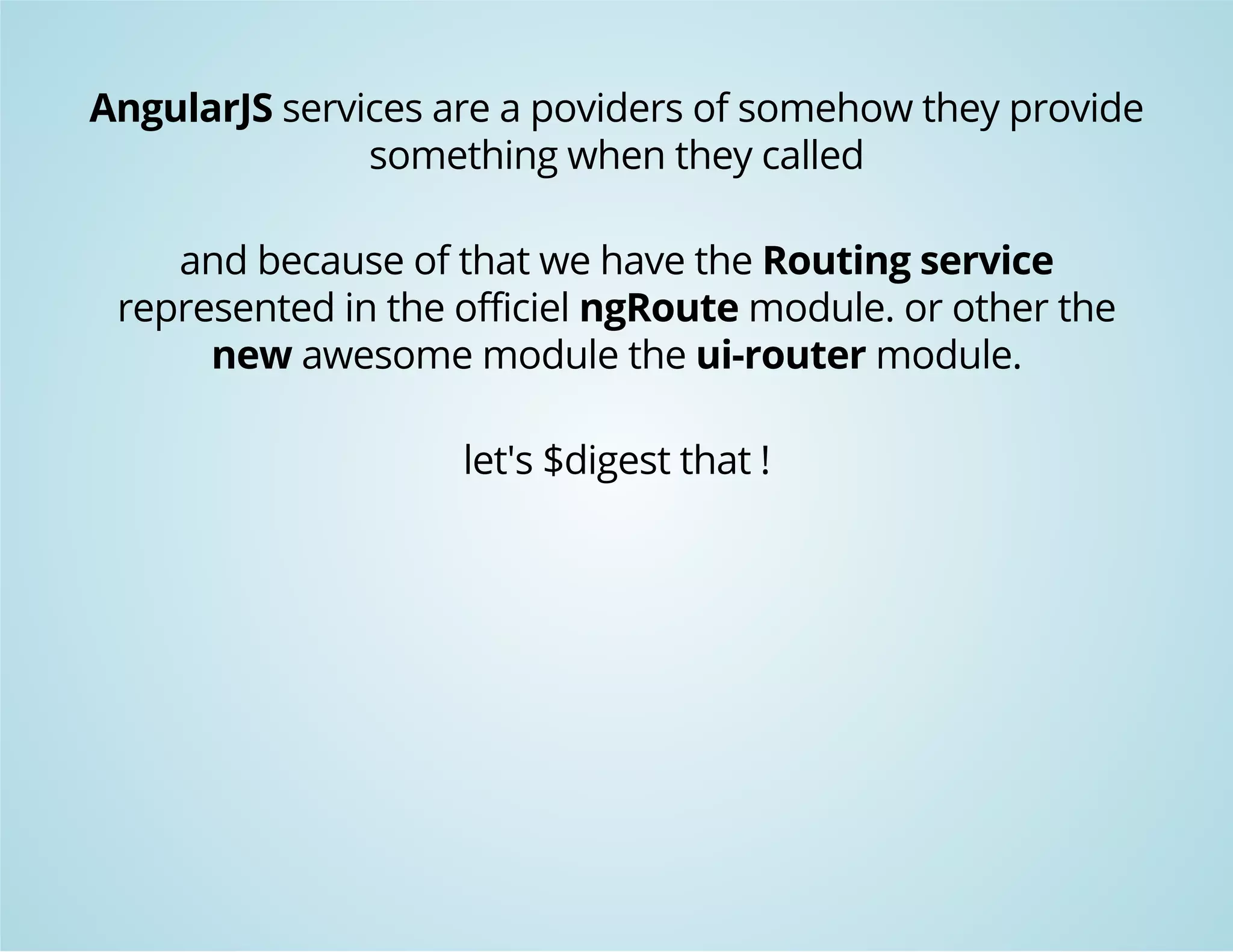
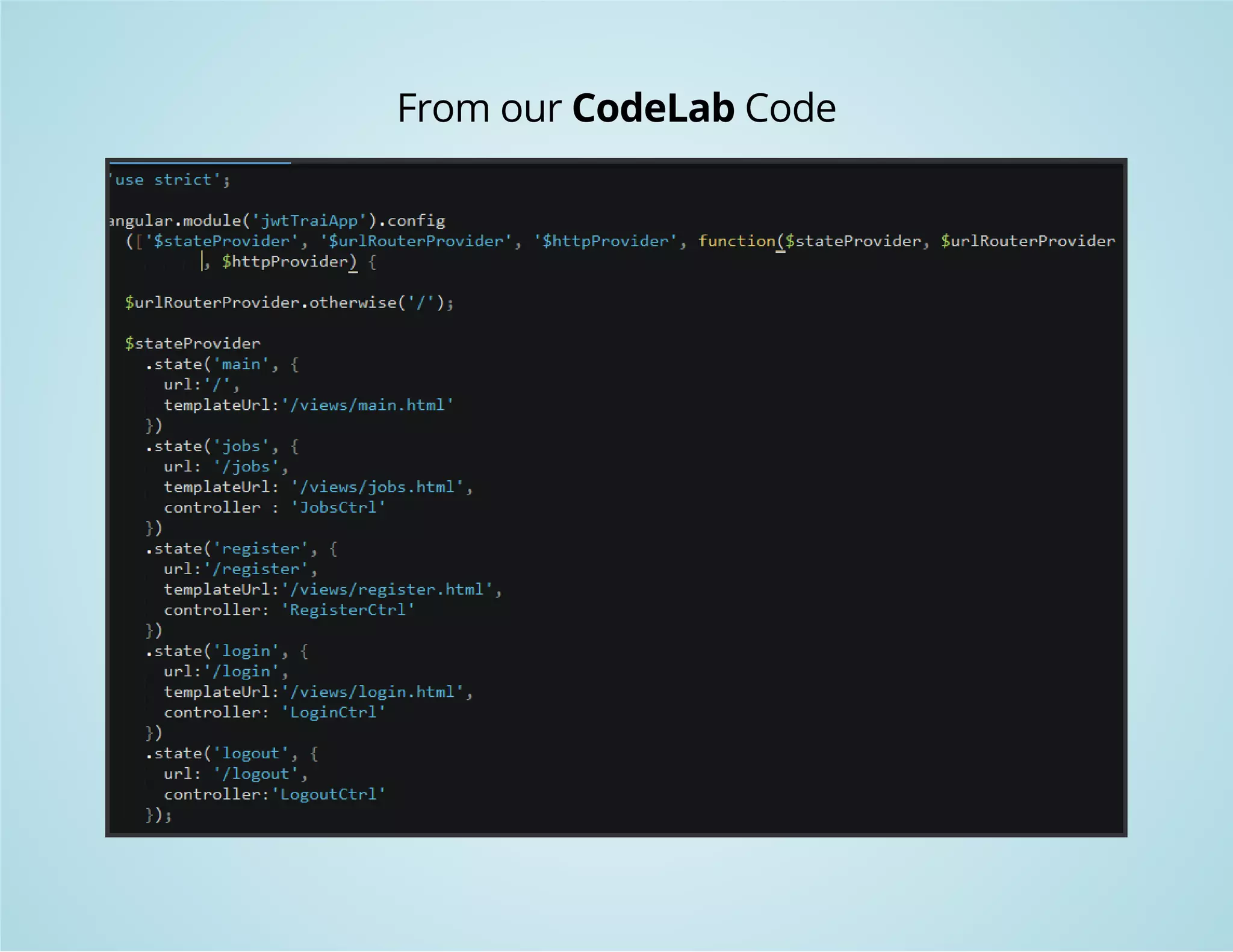
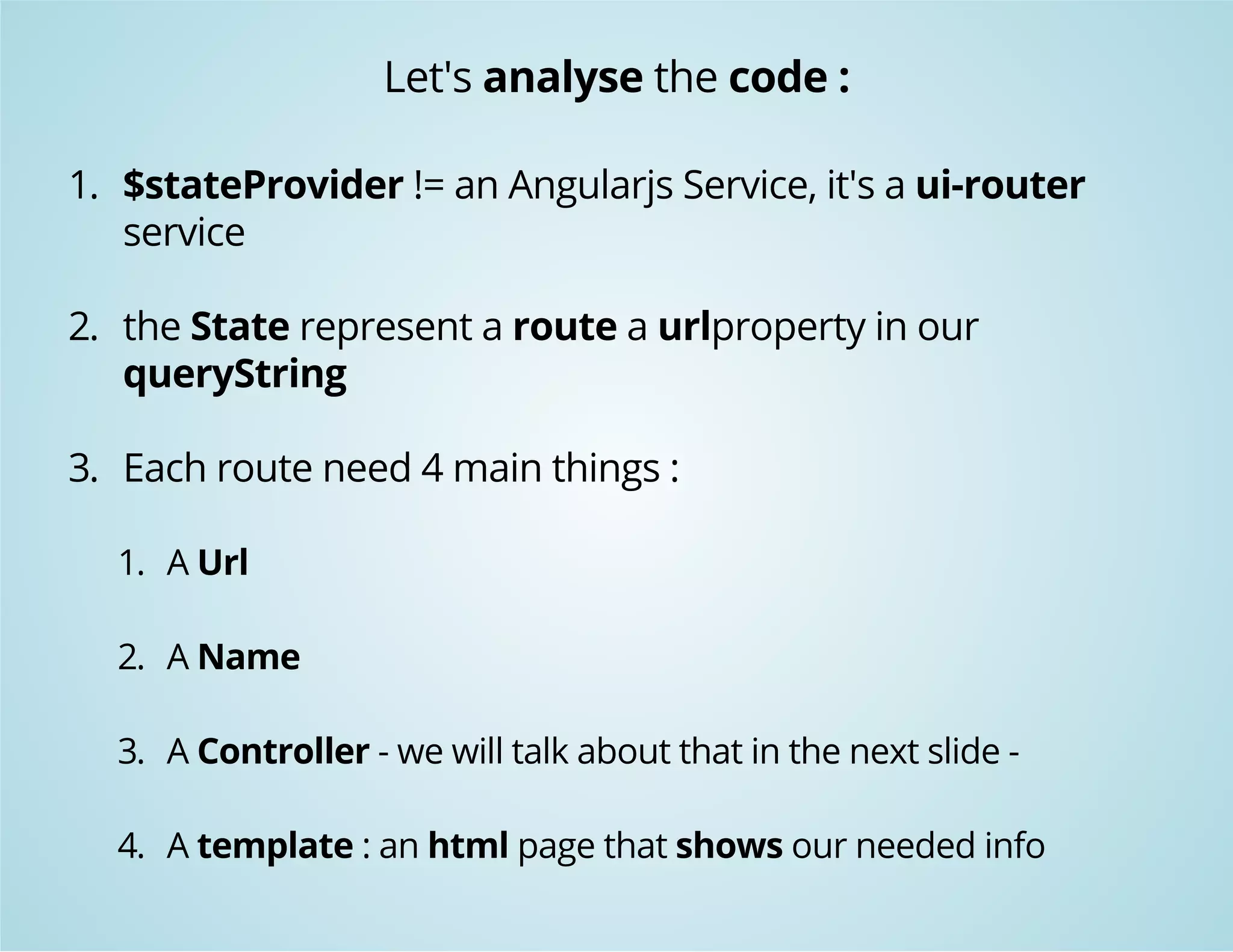
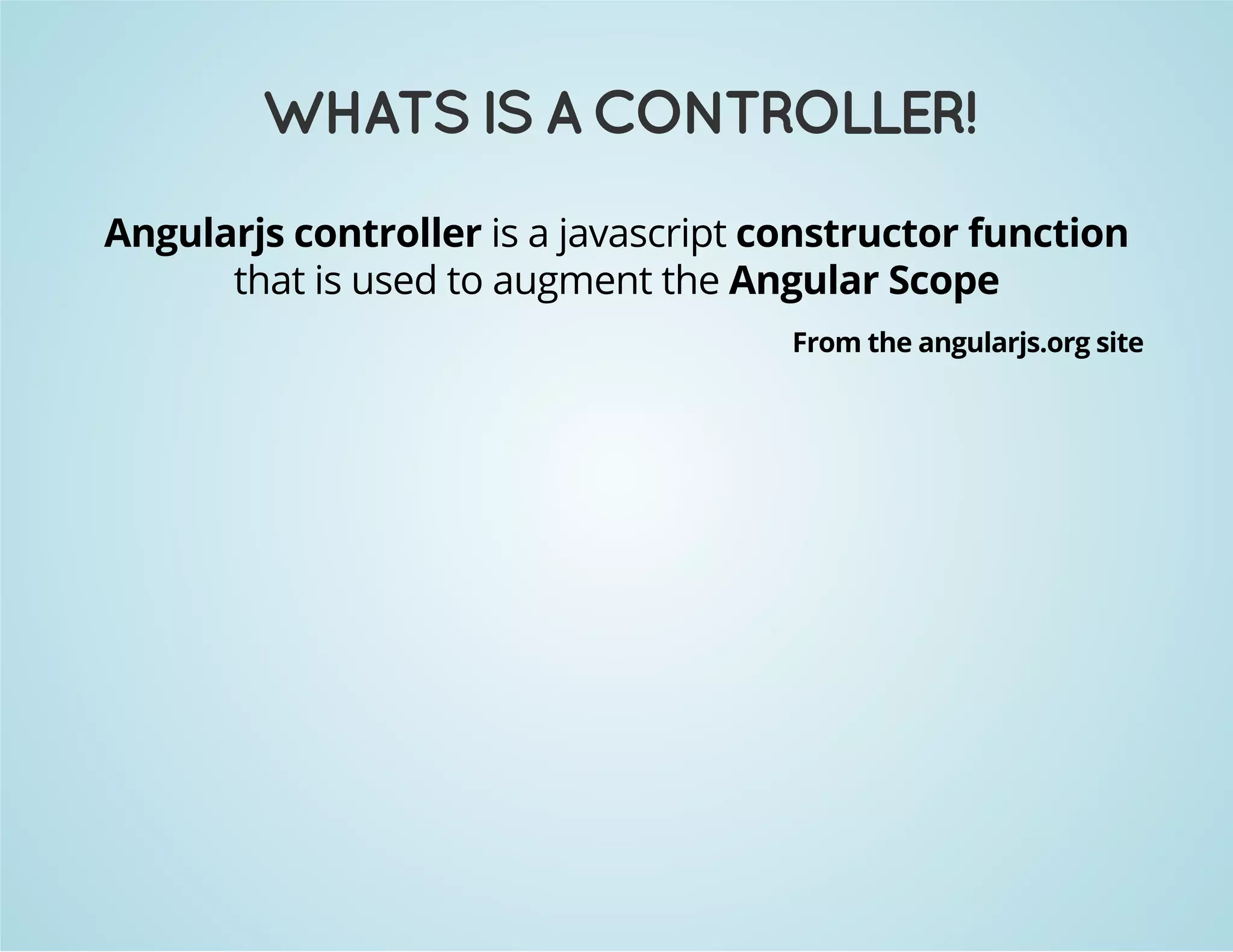
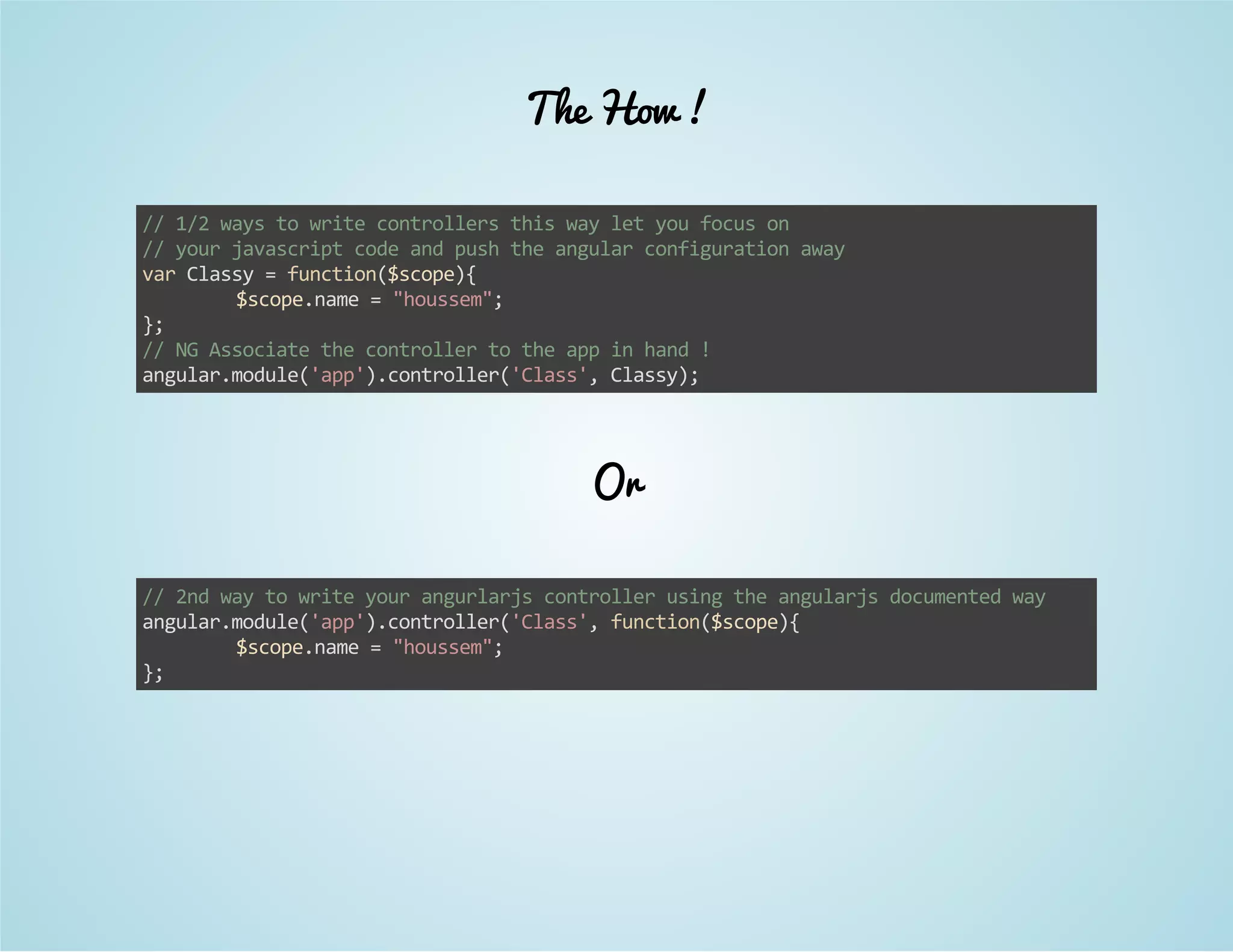
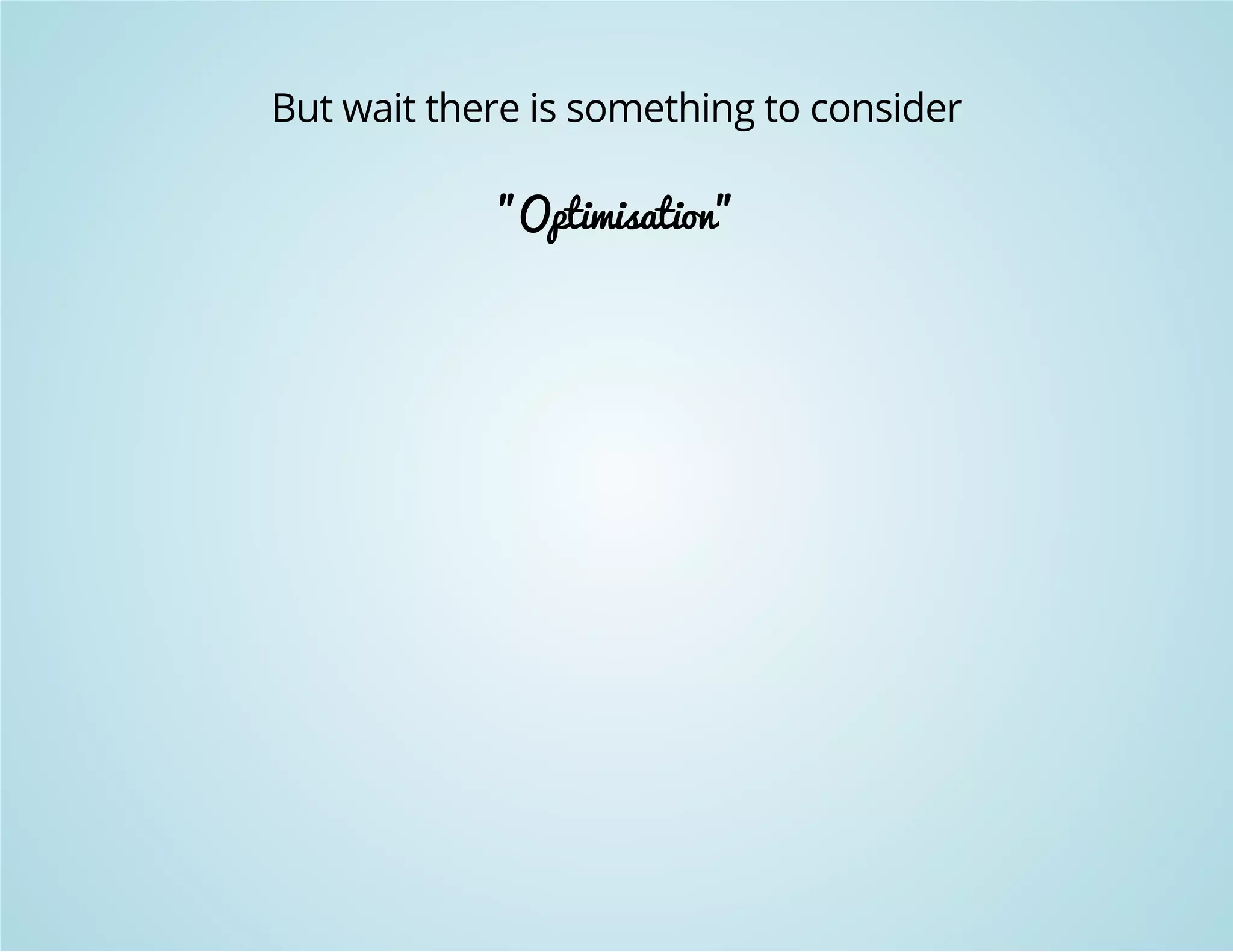
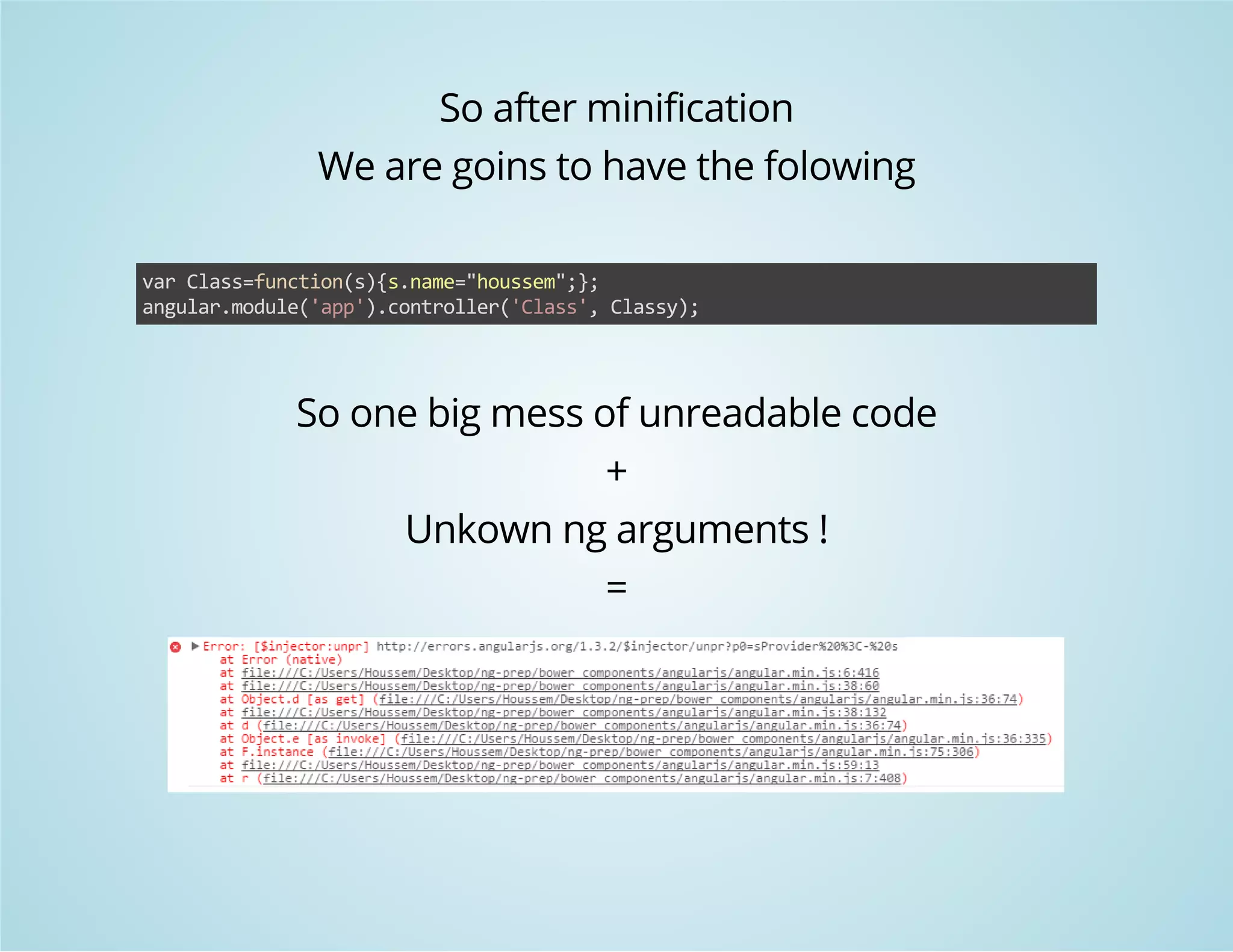
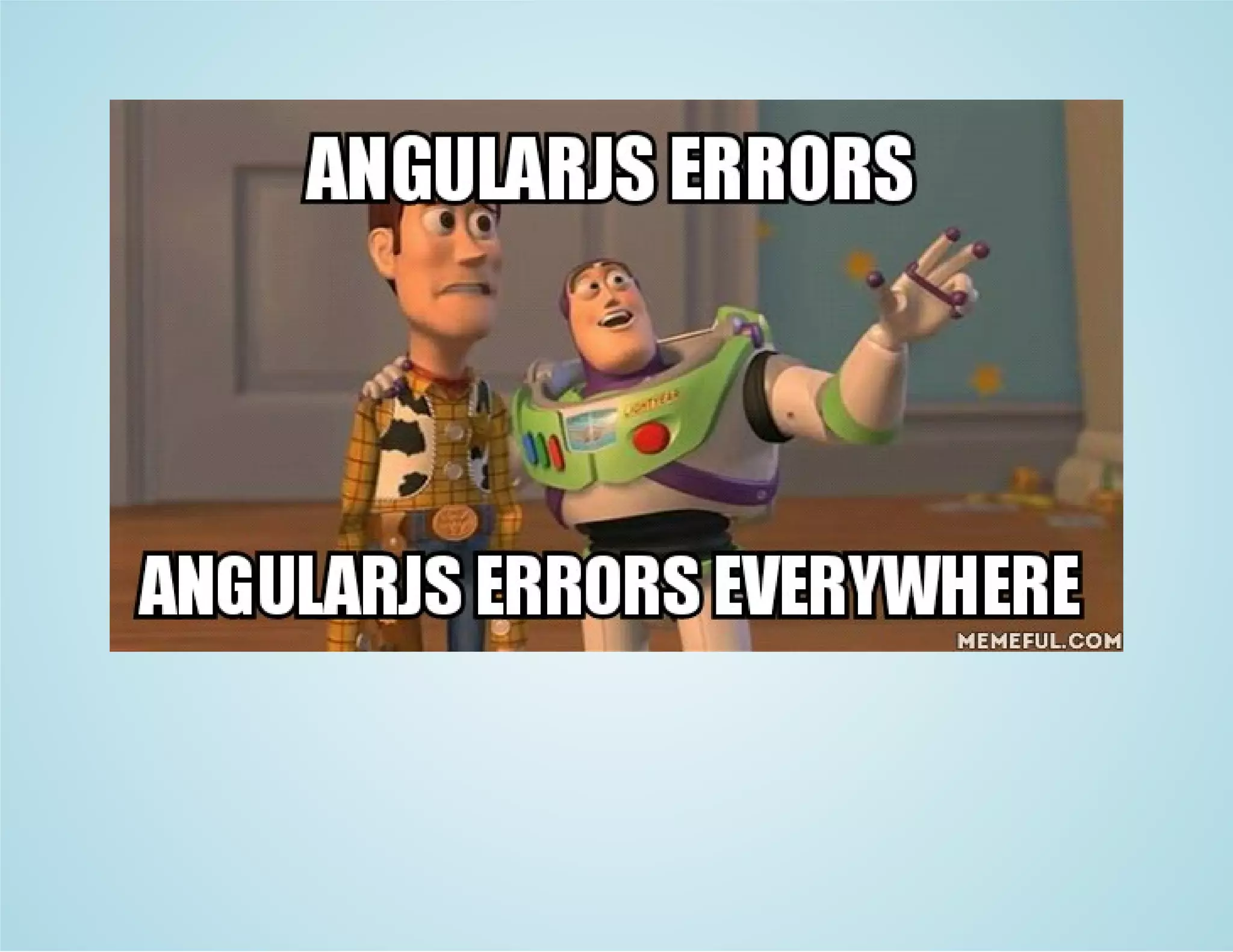

![The How !
// 1/2 ways to write controllers this way let you focus on
// your javascript code and push the angular configuration away
var Classy = function($scope){
$scope.name = "houssem";
};
// 'DI' magic
Classy.$inject = ['$scope'];
// NG Associate the controller to the app in hand !
angular.module('app').controller('Class', Classy);
so after minification we're going to have the following
var Classy=function(s){s.name="houssem";};Classy.$inject=['$scope'];
angular.module('app').controller('Class', Classy);
The result : Same mess with correct output and a happy
console](https://image.slidesharecdn.com/4rto0o2sugxta8kyqzma-signature-f4fc4a523b903b480c801e3364849de7956f8dc2b89352c95f2baeefdc02bf94-poli-141214132939-conversion-gate01/75/AngularJS-101-40-2048.jpg)
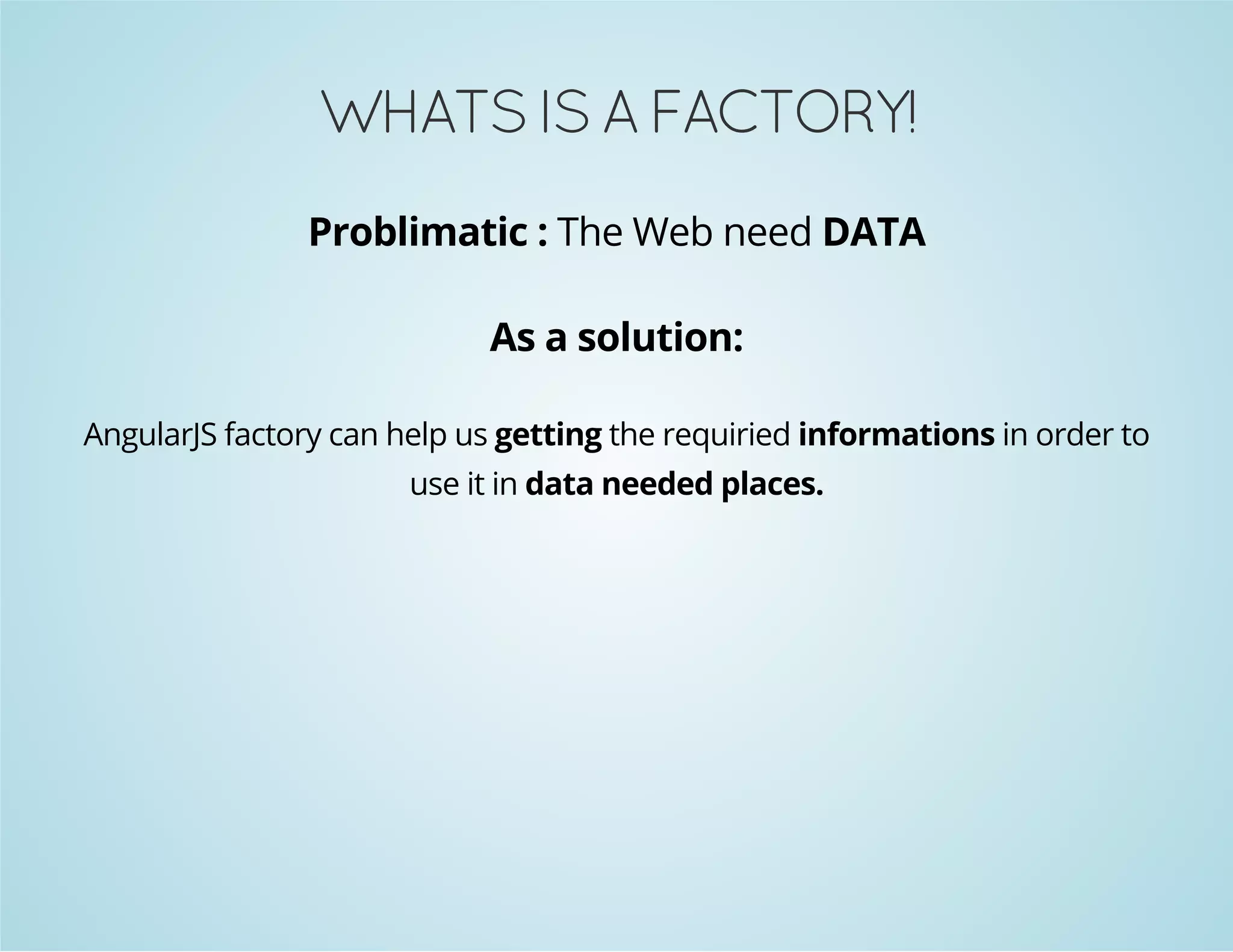
![The Factory syntax !
// 1/2 ways to write factories this way let you focus on
// your javascript code and push the angular configuration away
var ClassyFactory = function($http){
return {
getGDGBlidaMembers : function(year){
return $http.get('/DATA ENDPOINT ROUTE/'+year);
}
};
// DI
ClassyFactory.$inject = ['$http'];
// NG Associate the factory to the app in hand !
angular.module('app').factory('ClassyFactory', ClassyFactory);
PS : we're using the revealing pattern ;-)](https://image.slidesharecdn.com/4rto0o2sugxta8kyqzma-signature-f4fc4a523b903b480c801e3364849de7956f8dc2b89352c95f2baeefdc02bf94-poli-141214132939-conversion-gate01/75/AngularJS-101-42-2048.jpg)
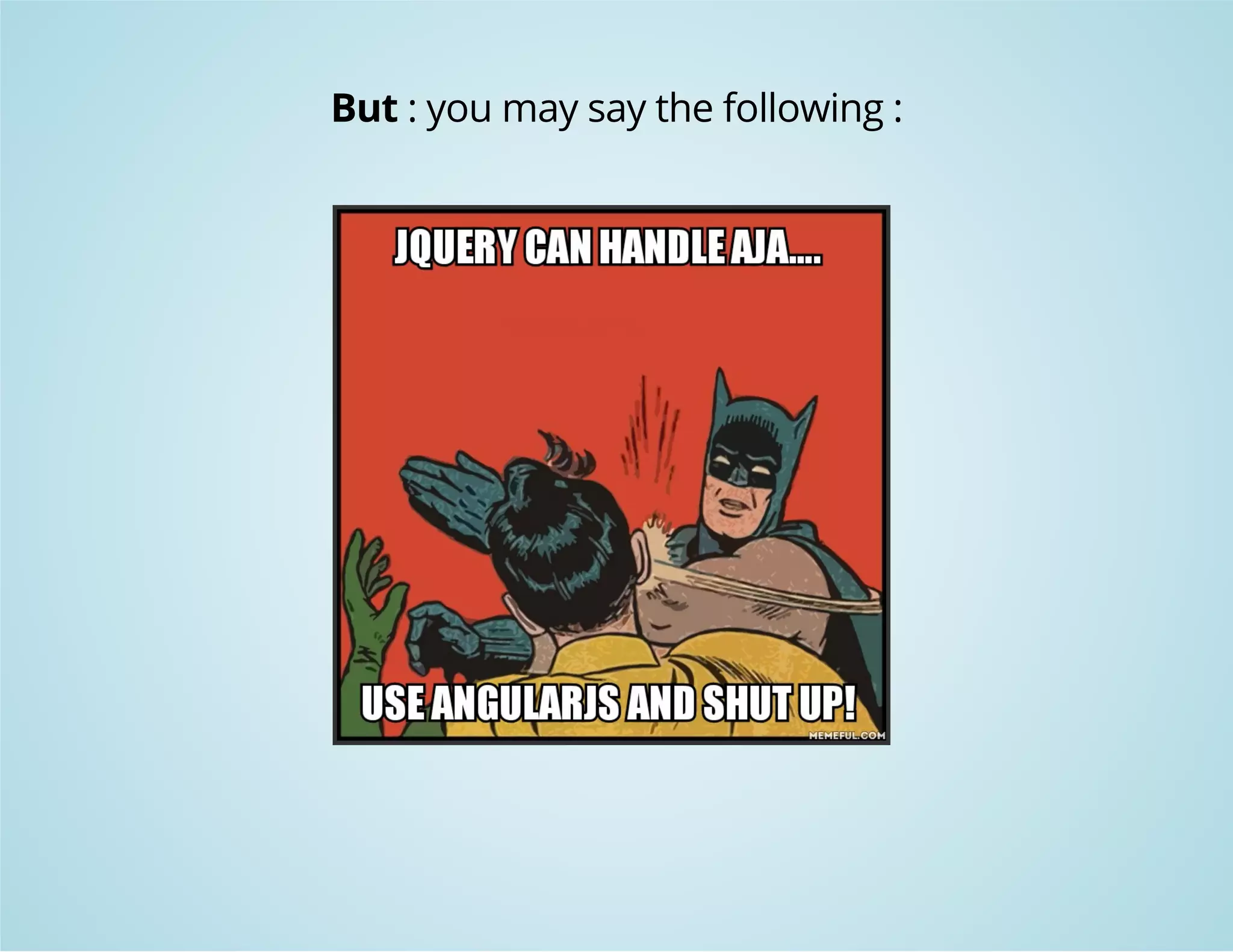
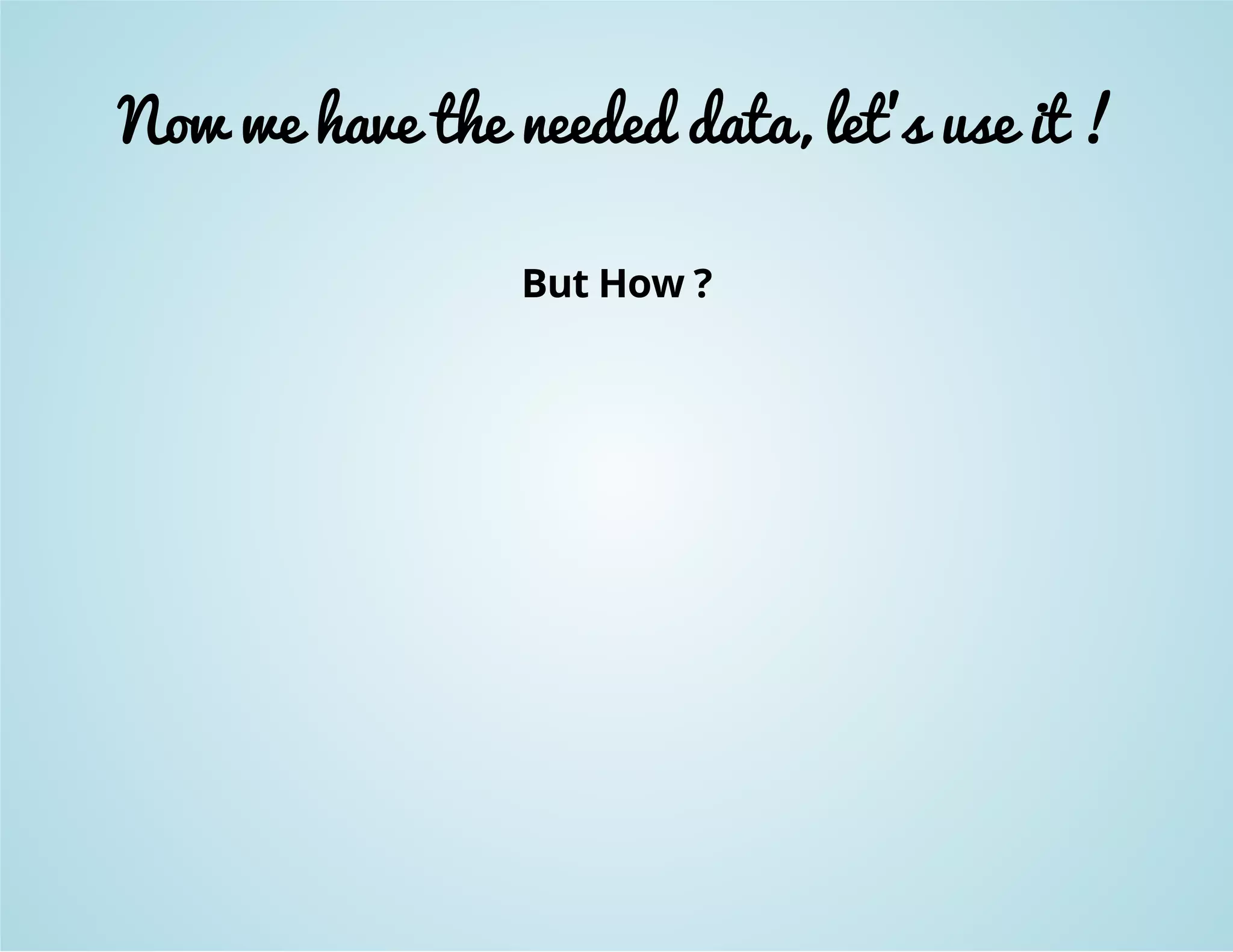
![Simply declare it as dependency in your Controller
var Classy = function($scope, ClassyFacotry, INotify){
ClassyFactory.getGDGBlidaMembers(2014)
.success(response) {
$scope.data = response.members;
INotify.onSuccess('Data Gathring', 'Done with success !');
}.error(response){
INotify.onError('An error has occured', response.err_message + ' !');
}
});
};
//DI
Classy.$inject = ['$scope', 'ClassyFacotry', 'INotify'];
// NG Associate the controller to the app in hand !
angular.module('app').controller('Class', Classy);
Your now well covered !
Display It ^_^](https://image.slidesharecdn.com/4rto0o2sugxta8kyqzma-signature-f4fc4a523b903b480c801e3364849de7956f8dc2b89352c95f2baeefdc02bf94-poli-141214132939-conversion-gate01/75/AngularJS-101-45-2048.jpg)

